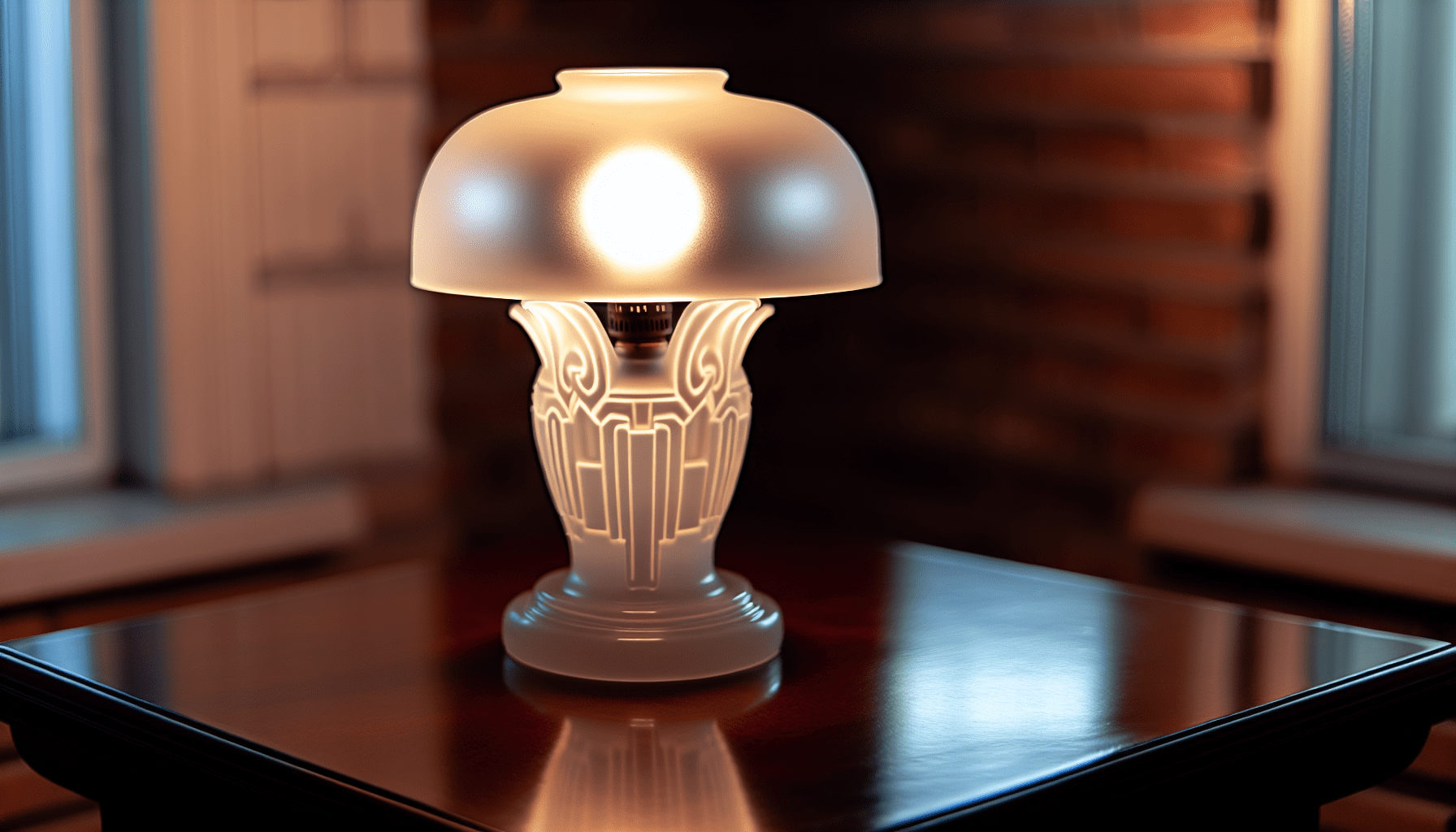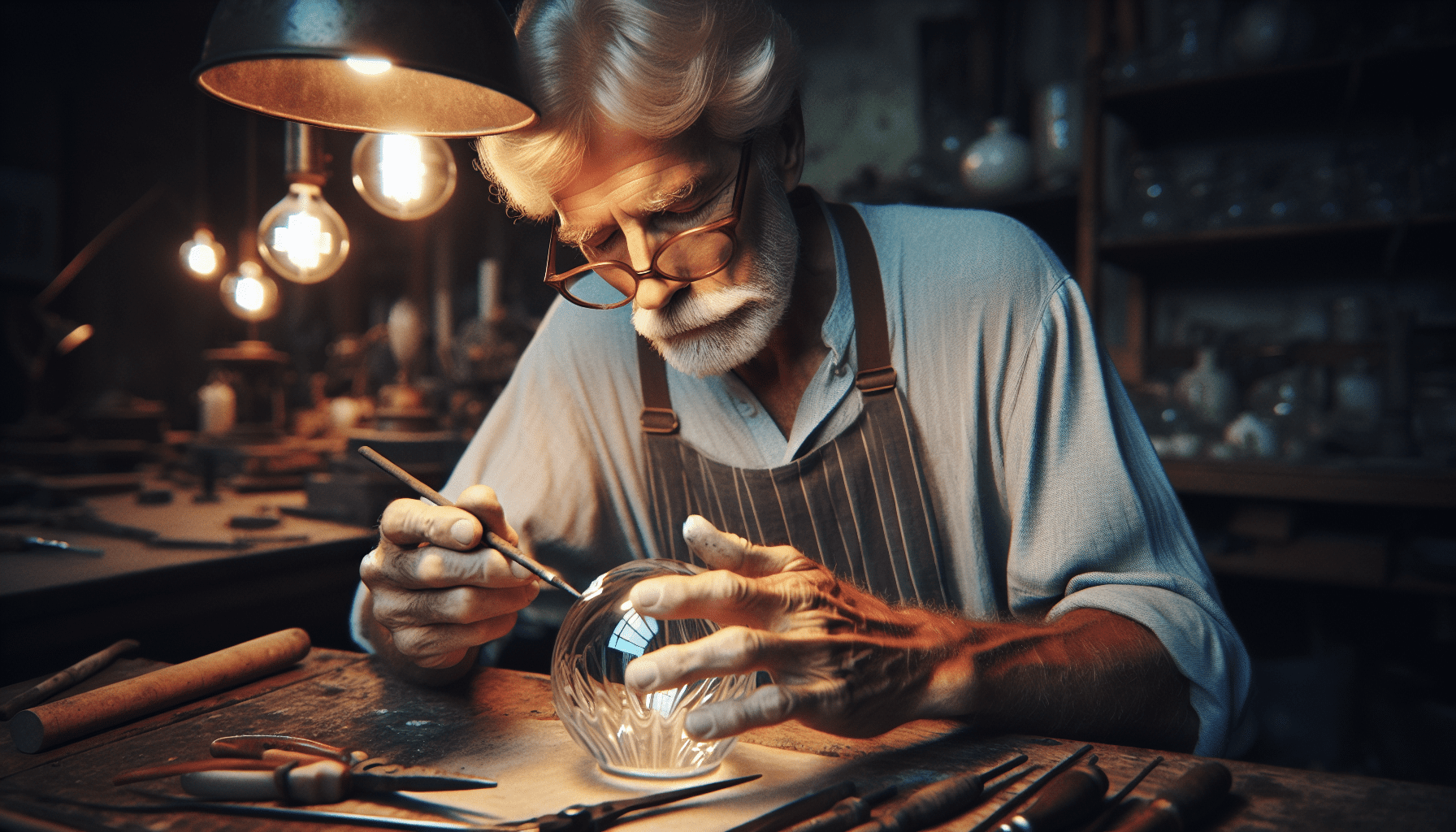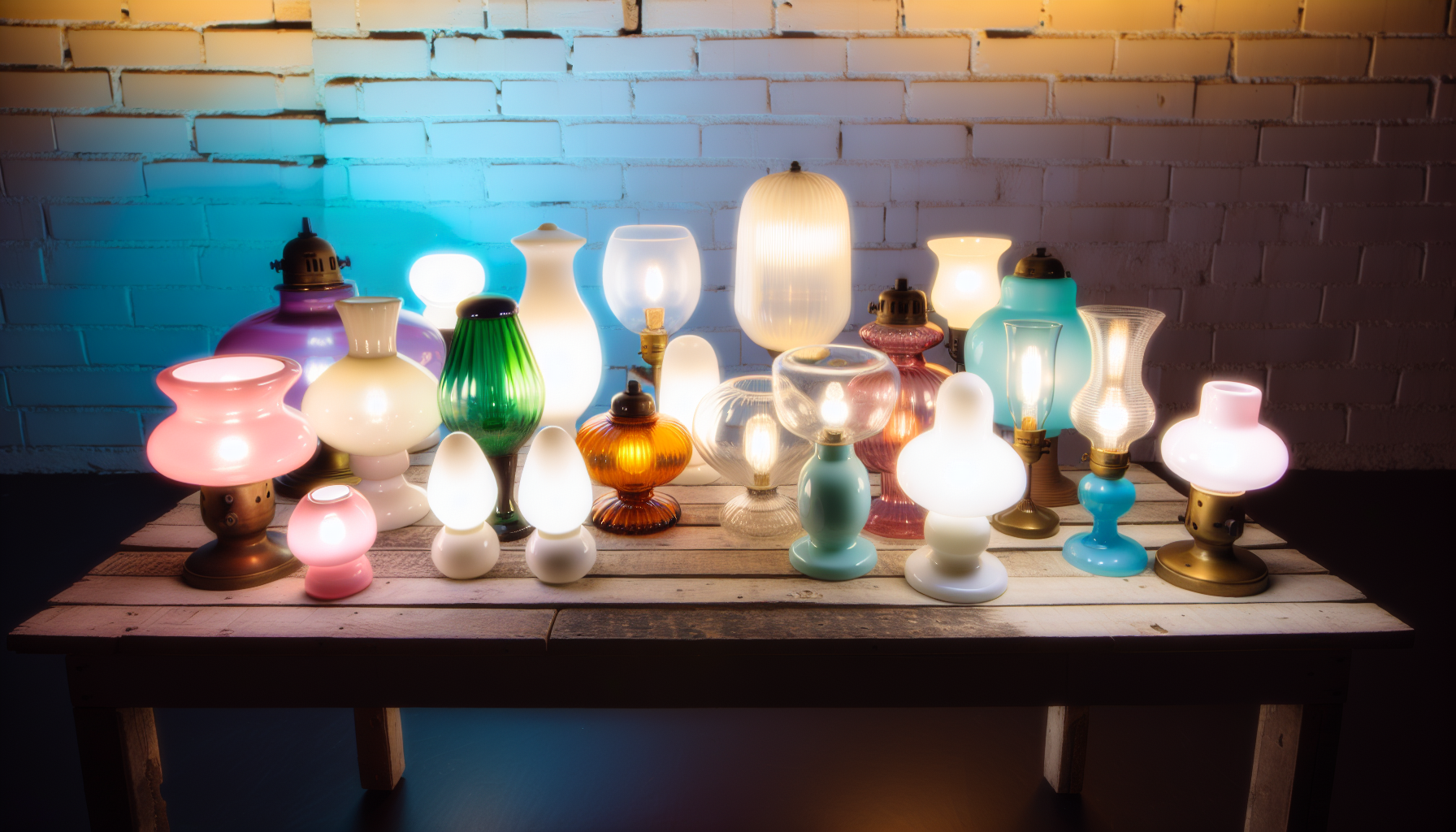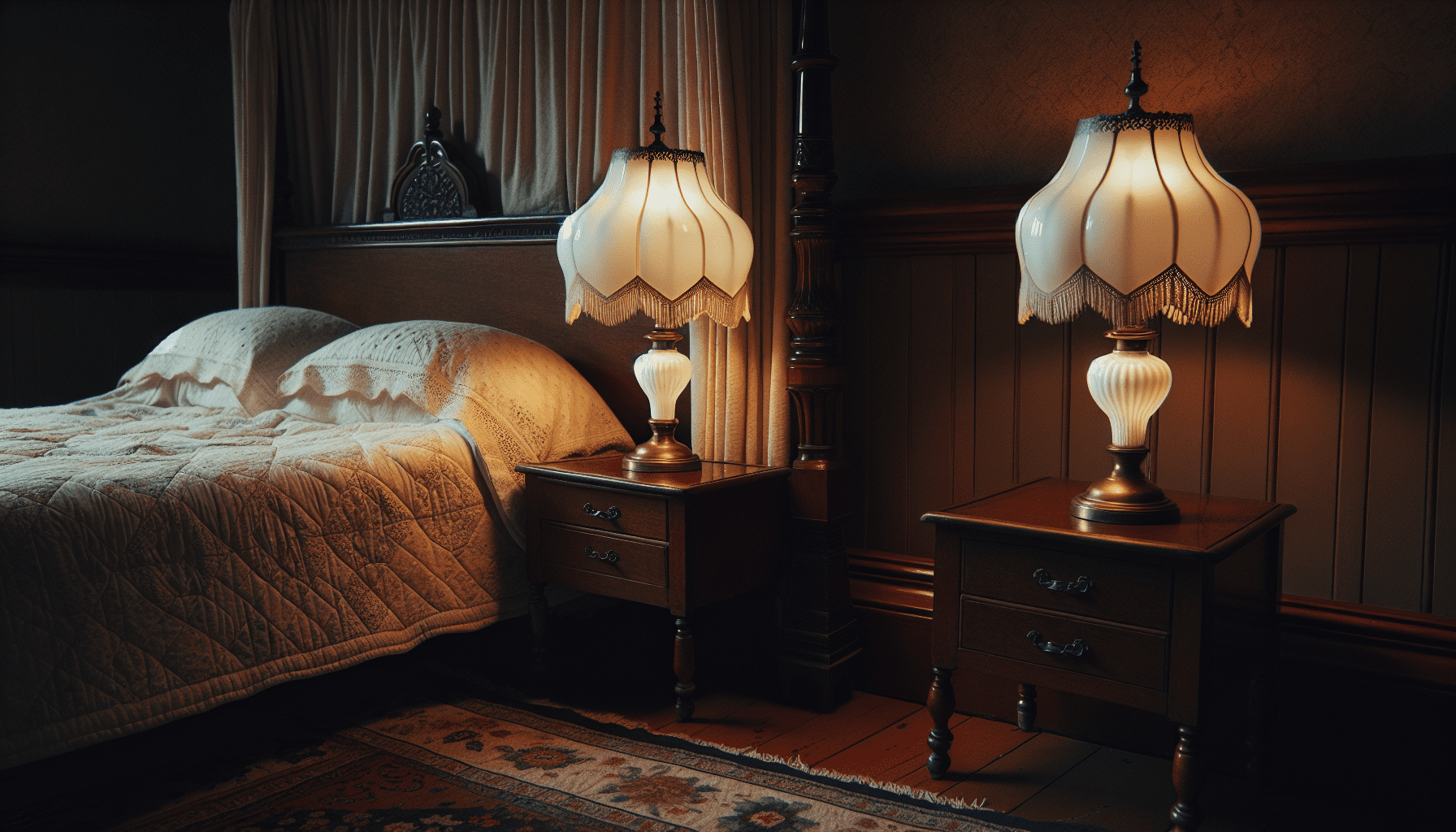If you’re in search of a milk glass lamp, understanding their appeal and how to pick the right one can be crucial. These fixtures are more than relics of the past; they’re timeless treasures that blend seamlessly into modern interiors. Our guide cuts straight to what makes a milk glass lamp a keeper, from its Victorian-era roots to choosing one that complements your decor without the guesswork.
Key Takeaways
Milk glass lamps provide a mix of vintage charm and modern design, are known for their seamless incorporation into various home decor styles, and each piece’s unique craftsmanship adds functional beauty and character to interior spaces.
Authentic milk glass lamps from brands like Westmoreland Glass and Fenton Art Glass can serve as valuable collectors’ items, reflecting a dedication to intricate manufacturing processes and historical significance from the Victorian era to mid-20th century.
Proper care, such as regular cleaning without harsh chemicals and careful handling, is essential for preserving milk glass lamps, and current market conditions offer favorable opportunities for collectors to find these pieces at competitive prices on platforms like eBay and Etsy, as well as local outlets.
Exploring the Charm of Milk Glass Lamps

Milk glass lamps, with their vintage allure and timeless beauty, have been captivating homeowners and collectors alike for generations. Their features include:
Opaque, creamy color
Intricate design patterns that are not painted on but are an inherent part of the glass itself
Each lamp is a unique piece of art
Functional purpose of providing a soft, diffused light
Adds warmth and charm to any room
If you’re an antique collector or homeowner in search of distinct lighting, gaining insight into the history and appeal of milk glass lamps is beneficial. These lamps rose to prominence during the Victorian era, serving as an affordable alternative to opulent materials like china and porcelain. Over the years, their popularity has only grown, with modern interpretations infusing them with contemporary aesthetics while preserving their classic charm.
The Allure of Antique Milk Glass
The opaque, creamy hue of antique hobnail milk glass is a hallmark of its unique appearance. Its surface features raised designs—ranging from the signature “hobnails” to diamond patterns and plant-inspired details like leaves and grapes—that are crafted directly into the glass rather than being applied as paint, showcasing the artistry involved in their creation.
To produce the characteristic opalescent sheen found on milk glass, arsenic was initially incorporated into its formula. Subsequent versions utilized alternative substances such as tin oxide or feldspar to achieve that rich ivory coloration.
Modern Interpretations
The appeal of antique milk glass lamps has evolved, as these distinct pieces have been reimagined by contemporary designers. These modern creators are incorporating minimalist aesthetics into the traditional design of milk glass lamps, thus introducing an updated take on the timeless style. By integrating sleek metals and marble materials with classic milk glass designs, a harmonious blend of old and new is achieved.
Time-honored nail details are seamlessly woven with this contemporary approach to design, resulting in creations that possess enduring charm while reflecting modern sensibilities inspired by Hollywood Regency style.
Pairing with Home Decor
Milk glass lamps are celebrated for their exceptional adaptability in home decorating. Here’s how they can enhance the ambience of your space:
Milk glass lighting fixtures add a touch of timeless beauty and subtle neutrality, making them perfect as either prominent or discreet accents within contemporary settings.
The up-to-date styling of these lamps allows them to double as practical sculptures that enrich a room without dominating it.
Blending milk glass lights with traditional pieces infuses versatility into your decor, creating harmony between old-world and current aesthetic sensibilities.
For an interior with diverse flair, consider juxtaposing milk glass lighting against modern materials or varied textures like wood or metal. This approach adds layers of intrigue while disrupting any potential monotony within an environment.
To weave milk glass light fixtures into an eclectic design scheme you might:
Combine a white-hued lamp on top of a sleek metallic end table
Spotlight one as the central feature atop a vintage wooden dining surface
Adorn an antique bureau or hallway stand with such illuminating artistry
Opting for versions seated on bases made from bronze, black hues, or marble transforms these elegant luminaires into focal points resonant with mid-century modern allure ideal for eclectic tastes.
Design experts often recommend deploying milk glass table lamps to capitalize on seasonal themes. Their pristine white glossiness and ornate patterns make them particularly suitable additions to springtime festivities.
The Craftsmanship Behind Milk Glass Table Lamps

The allure of milk glass lamps extends beyond their external aesthetics to the craftsmanship that underlies their creation. Each lamp is a testament to the skill and creativity of the artisans who create them. From the shaping of molten glass into intricate designs to the selection of complementary materials for the bases, every aspect of a milk glass lamp involves careful consideration and expert execution.
Appreciating these pieces on a deeper level and making informed collection decisions becomes easier with knowledge of the craftsmanship involved in creating milk glass lamps. Whether you’re attracted to the allure of antique milk glass or intrigued by modern interpretations, understanding the artisanal techniques and materials involved can enhance your appreciation of these beautiful pieces.
Artisanal Techniques
Crafting milk glass lamps is an intricate task that requires time-honored handcrafting skills. By carefully pouring molten glass into sturdy iron molds and using a plunger to distribute the material thoroughly, artisans achieve finely detailed patterns within the glass.
Certain producers, such as Fenton Art Glass, elevated this artistry by manually pressing the hot glass into forms and then scrupulously hand-polishing every item. This attention to detail has led to the outstanding quality observed in their milk glass creations.
Material Matters
Milk glass, or ‘opal glass’ as it was coined by Venetian artisans of the 16th century, is distinguished by its opaque or semi-transparent milky white color. Companies such as Westmoreland Glass are known for producing milk glass with a characteristic sheen and smooth texture that signifies high quality. The allure of milk glass extends beyond the material itself to include design elements. Bases made from brass, bronze, and marble enhance these pieces aesthetically.
Milk glass lamps may also showcase ornate features like gold trimmings and scalloped contours while incorporating modern touches such as brass tables and clear light diffusers—melding historic charm with contemporary appeal seamlessly. The stands supporting some milk glass table lamps feature black antique hardware which exemplifies how traditional elegance can be married with practicality in lamp designs.
Embracing an array of influences including Art Deco style, certain milk-glass lamps exhibit stacked globe silhouettes paired elegantly atop brass gold bases. This reflects the rich variety of styles and materials present within the realm of milk-glass lamp craftsmanship.
Functionality Meets Style
The allure of milk glass lamps extends beyond their visual appeal. They are designed for both ornamental purposes and resilience. These durable pieces withstand everyday wear and tear as well as minor accidents, ensuring longevity in functionality. Milk glass table lamps also provide convenience through a range of switch mechanisms that include options like the in-line type, the timeless rotary variety or those showcasing exposed bulbs. The milk glass table lamp stands out among home lighting choices for its seamless blend of sophistication with practical use.
Contemporary versions of these lamps can accommodate environmentally friendly light bulbs, merging state-of-the-art energy efficiency with classic aesthetics. When refurbishing milk glass lamps, it is critical to maintain electrical safety and effectiveness by updating components such as aged sockets and switches to modern standards.
Identifying Authentic Vintage Milk Glass Lamps
Milk glass lamps from the Victorian era are respected by collectors, who often pay hundreds of dollars for these historically significant pieces. To become a savvy collector of milk glass, one must acquire knowledge and experience to navigate the market nuances and identify authentic items that present a sound financial investment.
Authentic milk glass lamps span various decades, covering early 20th century designs through those produced in the 1950s and 1960s. It is crucial for collectors to pinpoint the lamp’s era correctly to verify its authenticity.
Recognizing Hallmarks of Authenticity
To ascertain the authenticity of vintage milk glass lamps, it’s essential to look for distinctive features. Notable characteristics may include manufacturer’s marks, such as “WG” denoting production by Westmoreland Glass, or particular notches in the glass which could link a lamp to reputable brands like Stiffel. An authentic piece might exhibit a ‘ring of fire’—a specific iridescent quality when scrutinized in light—which usually signifies that the milk glass lamp dates back to the pre-1960s.
Examination can involve assessing physical attributes like weight and craftsmanship. Vintage lamps from certain manufacturers like Stiffel typically have heftier bases. Visible mold lines or seams are frequently evident on older pieces and these imperfections may suggest they hold greater value due to their age.
Notable Brands and Designers
In pursuit of genuine vintage milk glass lamps, it is advantageous to acquaint oneself with prominent brands and designers that are celebrated for their high-quality creations. Among these distinguished names are:
Stiffel
Rembrandt
Westmoreland Glass
Atterbury & Company
Bryce Brothers
New England Glass Company
Each brand brings a signature style that sets its lamps apart from the competition.
To elaborate, some examples include:
Westmoreland’s characteristic use of grape patterns and beaded edges,
Fenton’s iconic hobnail texture combined with crinkled or ruffled borders,
Atterbury & Company famed for incorporating distinctive animal figures into their designs.
Tips for Collectors
If you’re interested in beginning or expanding your collection of milk glass lamps, consider the following advice:
The value and appraisal of antique milk glass lamps depend on various determinants including their make, vintage, pattern design, scarcity and state.
Determine the age and assess the value of your vintage milk glass lamp by comparing it to recognized reference guides and listings.
Enhance your understanding through direct exposure at venues such as shops specializing in antiques or events dedicated to glassware.
Seek insights from seasoned professionals within this niche.
To gain access to resources beneficial for development and to connect with like-minded individuals, collectors are encouraged to join groups such as the National Milk Glass Collectors Society. This society not only provides helpful information, but also organizes yearly gatherings for aficionados.
Curating a Collection: Selecting the Right Milk Glass Lamp

Assembling a collection of milk glass lamps is an exercise in deliberate selection, involving more than simply picking appealing items. It’s essential to account for elements like color, dimensions, and the balance between pieces. Traditional white milk glass offers adaptability and effortlessly melds with diverse interior designs. Conversely, colored milk glass lamps imbued with shades of blue or green provide a unique burst of color that can elevate the aesthetic appeal.
When building up your assemblage of these delicate fixtures—specifically those made from milky-hued glass—it’s imperative to take into consideration how they will fit within the room’s existing palette and spatial arrangements while complementing surrounding furnishings for optimal placement and impact.
Color Considerations
A milk glass lamp’s color can greatly affect the ambiance it adds to your space. Historically, milk glass has been crafted in a spectrum of hues such as:
Creamy white
Pale pink
Green
Blue
Black
The traditional creamy white shade of a milk glass light fixture acts as a flexible neutral that can blend seamlessly with vibrant color schemes or help achieve a minimalist, single-color design.
Alternatively, colored milk glass lamps come in several shades and allow for easy coordination with your current decor or act as an eye-catching focal point by adding an accentuating pop of color.
Size and Proportions
When building your collection of milk glass lamps, it’s important to pay attention to the size and scale of each lamp. Ensure that each lamp complements the room and doesn’t appear too small on a substantial piece of furniture or overwhelm a petite table by being disproportionately large.
Take into account the height of the lamp when making your selection. You’ll want to make sure that when seated, you are not directly in line with an exposed bulb, as this could cause discomfort or result in unpleasant glare while using the lamp for its intended lighting purposes.
Creating Harmony with Pairs and Sets
Crafting a harmonious aesthetic in your home isn’t solely about choosing separate milk glass lamps, but also entails the strategic placement of these pieces in pairs or as part of a set for uniformity. Positioning identical milk glass lamps on either side of end tables or along a lengthy console table not only achieves visual balance but also provides even lighting. When assembling a collection of milk glass lamps, aim to select ones with congruent design features such as hobnail textures or quilted detailing and align them within the same style and historical period to maintain cohesive decor throughout.
Serving dual roles, milk glass lamps are both practical sources of light and elegant decorative elements when they grace centerpieces or sit atop furniture like dressers and bookshelves, infusing an air of elegance into diverse areas around the house.
Showcasing Milk Glass Lamps in Your Space

Once you have collected your assortment of milk glass lamps, the next step is to showcase them within your living area. The arrangement and styling of either a singular lamp or a collection can significantly influence their decorative impact. Strategically positioning a pair of milk glass lamps flanking substantial pieces like sofas or beds yields harmonious, even illumination and elevates the aesthetic appeal.
The adaptability in design of milk glass lamps makes them suitable for incorporation into multiple interior styles from classic to modern settings based on an individual’s decorating preferences.
The Bedroom Retreat
The timeless charm of vintage milk glass lamps can enhance the sophistication and nostalgic allure of many spaces, particularly bedrooms. The subtle illumination they provide fosters a tranquil atmosphere ideal for creating a restful bedroom sanctuary. Positioning one on a nightstand offers ample light for reading, while arranging them as a set at each side of the bed delivers symmetrical lighting.
A glass lamp crafted from milk glass radiates a peaceful luminescence that converts your sleeping quarters into an oasis of calm—ideally suited to relax after an exhausting day.
Living Room Accents
Milk glass lamps serve as superb enhancements to the decor and atmosphere of living rooms. These lamps not only offer a stylish touch, but also enhance the room’s ambiance significantly. Placing a pair on end tables flanking a sofa can deliver even lighting while establishing visual symmetry.
On the other hand, using just one milk glass lamp can act as an attractive centerpiece in a cozy reading corner or atop a console table. The warm illumination from these milk glass lights renders the communal area more inviting, thus making them an excellent selection for such spaces.
Special Touches in Nooks and Corners
Consider incorporating milk glass lamps into areas of your home that might not be immediately apparent, such as hallways, cozy corners designed for reading, and kitchen workspaces. The addition of a milk glass lamp in these spaces can infuse them with a gentle hint of classic sophistication often reserved for more prominent rooms.
To enhance the historical charm, position the milk glass lamps atop antique furniture pieces or combine them with vintage accents like lace doilies and old-fashioned literature. This approach can elevate even modest spaces to new levels of elegance and grandeur.
Maintenance and Care for Your Milk Glass Lamp

To maintain the charming appearance and practical use of your milk glass lamps, regular maintenance is key. It’s important to clean them with cleaners or polishes that do not contain ammonia and are made specifically for cleaning glass. This practice helps protect the distinct luster and hue of your milk glass lamps, ensuring they keep illuminating your home with their classic elegance.
Regular Cleaning Tips
Maintaining a consistent cleaning routine for your milk glass lamps is essential to preserve their aesthetic appeal and utility, preventing deterioration over time. An efficient technique to cleanse milk glass involves employing a denture cleaner. Immersing the lamp in lukewarm water mixed with this cleaner allows you to purify the glass without any abrasive action.
As another approach, prepare a container of soapy water and delicately brush the lamp’s glass elements using a soft-bristled brush. For more precise cleaning tasks, apply a spray-on cleanser paired with an old toothbrush for eliminating dirt while safeguarding the integrity of the surface.
Handling and Moving
Handling and moving your milk glass lamps should be done with care to prevent damage. Always handle lamps with both hands to ensure a secure grip and minimize the risk of dropping the item. Avoid lifting lamps by the shade or any attached decorative elements, as these may not be structurally designed to support the weight.
When moving lamps, follow these steps to ensure their safety.
Wrap them in soft packing materials like bubble wrap to cushion against shocks.
Use sturdy boxes with padding when transporting lamps to prevent movement and potential damage.
If you’re moving larger lamps or several at once, consider using a cart or trolley with a flat surface and secure the lamps to prevent toppling.
Longevity Measures
To maintain the enduring attractiveness and usefulness of your milk glass lamps, it is essential to adopt specific preservation strategies. Opting for environmentally friendly lighting options such as fitting 9-watt LED bulbs that are compatible with these lamps not only promotes energy conservation but also contributes to their prolonged durability. Though not directly stated in the provided information, it is wise to shield milk glass lamps from harsh temperature variations to avoid possible harm.
Updating the electrical wiring on an antique milk glass lamp that possesses antiquated original wires can significantly improve its safety while prolonging its lifespan.
Shopping Guide: Finding the Best Deals on Milk Glass Lamps
Discovering the top sources for acquiring milk glass lamps is crucial, whether you are initiating or expanding your collection of these items. Given the significant reduction in prices over recent years, collectors now have a prime chance to add to their assortments without heavy financial commitments.
Digital platforms such as eBay and Etsy present an extensive selection of milk glass lamps, featuring both unique vintage models and uncommon colored versions. On another note, those just starting their collections might find exceptional deals at nearby thrift shops, estate sales, and yard sales where one-of-a-kind pieces can be found at attractive prices.
Online Marketplaces
E-commerce sites such as eBay and Etsy feature an extensive assortment of milk glass lamps, encompassing both common and more uncommon specialty items. These venues provide functionalities that enable customers to create notifications for fresh postings and take advantage of the ‘Make an Offer’ option for price negotiation on these sets. It’s crucial to verify the seller’s reputation by examining their ratings and perusing feedback from other buyers to confirm they have a track record of providing precise descriptions when it comes to milk glass items.
You should factor in shipping fees while determining how economical the purchase of lamps from online marketplaces is since these charges can notably influence the total cost associated with acquiring your set of milk glass lamps.
Local Finds
Antique stores, thrift shops, flea markets, estate sales, and yard sales serve as perfect hunting grounds for those in search of distinctive 1950s milk glass lamps. These venues frequently offer a range of unique items at appealing prices. Antique dealers that specialize in glass typically showcase an assortment of finer quality and more exceptional milk glass lamps that one might not encounter at ordinary thrift store locations.
Seeking guidance from employees or specialists who have expertise in antiques or specifically in glass can shed light on the rarity and worth of the available selection of milk-glass lighting fixtures they possess.
Price Comparison and Budgeting
While browsing for milk glass lamps, setting a financial limit is essential. Utilize the filtering options on e-commerce websites to view items that fit within your pre-determined spending cap. This helps prevent fiscal extravagance. Due to a significant reduction in the valuation of collectible glass over the last twenty years, acquiring milk glass items has become more affordable with several lamps being offered at reduced prices.
Employ price monitoring features when perusing online shopping venues to observe and analyze cost fluctuations concerning milk glass lamps. This strategy assists in identifying opportune moments to acquire these pieces economically.
Summary
The enduring beauty and distinctive allure of milk glass lamps have enchanted collectors and enthusiasts for generations. This guide has thoroughly examined the rich history, meticulous craftsmanship, techniques for recognizing genuine pieces, strategies for assembling a curated collection, and methods to maintain their condition. Whether you’re attracted to the classic grace of antique milk glass or fascinated by contemporary renditions, these lamps provide an elegant yet functional feature that remains perpetually in vogue. Don’t hesitate—start your personal assortment now and invite the perennial elegance of milk glass lighting into your living space.
Frequently Asked Questions
How do you identify milk glass?
To recognize milk glass, search for a surface that is satiny and even to the touch while inspecting for any imprints on the base of the item. Should you encounter a texture resembling sand grains, it’s probably an indication of more recent production. The identification process for milk glass is straightforward due to its opaque nature, which prevents one from seeing through it.
Nevertheless, linking particular items of milk glass with certain makers or historical periods can pose difficulties.
What year did milk glass come out?
Originating in 16th century Venice, milk glass was created as a response to the high demand for colorful yet affordable glass items.
Between 1575 and 1587, Florence also began producing this milky-hued glass to serve as an imitation of porcelain.
How do you style a milk glass lamp?
Position a glass lamp with a milk glass finish on top of a console table that sports a T-shape and is equipped with lower-tier shelving. Enhance the ensemble by hanging an ample circular mirror above this setup, and place an assortment of retro books next to the lamp for an eclectic aesthetic flair.
Do they still make milk glass?
Glass producers continue to manufacture milk glass currently, crafting both brand new designs and replicas of highly sought-after collectible items and patterns.
How do I know if my vintage lamp is valuable?
In order to ascertain the value of your antique lamp, compare it with similar vintage lamps through online searches or by visiting antique shops, which will provide a solid understanding of its market value.

